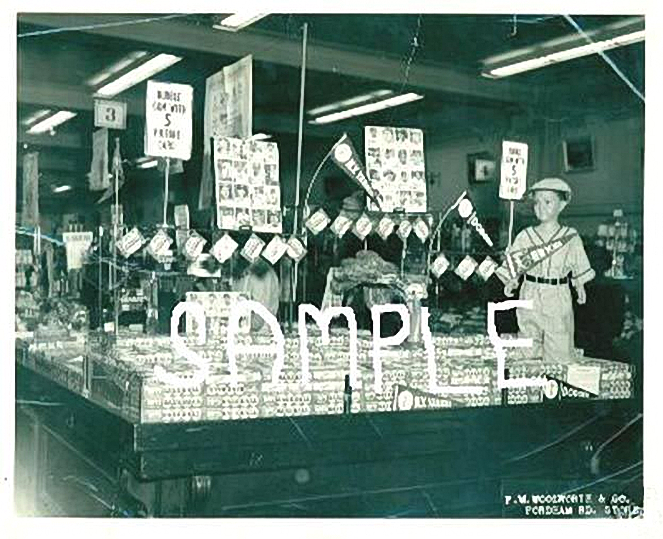
Chewing gum has enjoyed a long history. Evidence of gum chewing dates back to prehistoric men and women who chewed on tree resin for enjoyment. Other ancient cultures around the world also are documented gum chewers.
Greek and Middle Eastern cultures routinely chewed resin from the mastic tree to freshen their breath. In Central America, the Mayans enjoyed chewing on chicle sap. This Central American tree resin was the basis for modern chewing gum.
In the United States, Native Americans and settlers first chewed on spruce tree resin and beeswax. In New England, spruce sap was used to make America’s first gum. In 1848, John Curtis used resin to make State of Maine Spruce Gum. He sold two hunks of the gum for a penny. As time went on, spruce gum became less popular and was replaced with a paraffin-based gum.
In the mid 1800s, a photographer named Thomas Adams befriended Mexican leader Antonio Lopez de Santa Anna. The men discussed ways to use the chicle sap for profit. Santa Anna sent chicle from Mexico to Adams who mixed it with rubber to make a better tire.
Adams determined his mixture was useless and wanted to throw it out. Then he overheard a young girl asking for gum at a drug store. It dawned on him to turn the mixture into gum. Adams created a pure chicle gum and sold it for a penny.
After success with pure chicle gum, Adams tried to add flavor to it. He created a licorice-flavored gum called Black Jack. It was the first gum to be sold as a stick not in chunks, and was popular with the public. The gum had one drawback; it could not hold flavor.
The flavor issue was not fixed until 1880. A man named William White experimented with flavors after receiving a shipment of chicle. He solved the problem by adding sugar and corn syrup to the mix. The first flavor he used was peppermint and it stayed in the gum during chewing.
In the early 1900s, gum manufacturers relied on word of mouth and repeat customers. William Wrigley Jr., a former soap and baking soda salesman, new to the gum industry, saw other companies holding back on advertising and decided to advertise his gum products. Wrigley became a pioneer in advertising, and his ads were everywhere from billboards to magazines. The popularity of gum surged.
World War II brought modern gum to the world. Soldiers always carried gum on them. Some claim military men used gum to patch holes on equipment. It is uncertain whether these stories are true, but gum became a worldwide sensation due to the soldiers.
In the 1950s, manufacturers introduced sugarless and sugar-free gums allowing more people to enjoy gum. Today, sugarless varieties lead gum sales.
Like chewing gum, bubble gum has enjoyed a great history. In the early 1900s, Frank Fleer experimented with different gum recipes to find bubble gum. The first bubble gum recipe was too sticky to enjoy and Fleer’s experiment was never marketed.
However, Walter Diemer introduced a successful bubble gum recipe in 1928. Diemer experimented with different gum recipes when a mixture started bubbling. He accidentally discovered the bubble gum recipe. As a test, he took the gum to a grocery store and sold it all in one day.
Diemer brought his invention to the Fleer Company where they marketed it as Dubble Bubble. Diemer taught the salesmen how to blow bubbles. When customers bought the gum, the salesmen taught customers to blow bubbles. Dubble Bubble was the only bubble gum in the market for many years.
At the end of World War II, the Topps Company started making bubble gum. The manufacturer introduced Bazooka, named for a musical instrument Bob Burns created in the 1930s. Bazooka gum became famous for its ‘Bazooka Joe’ comics and baseball cards. In 1953, Topps added gum to its baseball card packs as incentives for children.
Today, the tradition of blowing bubbles continues. Family and friends now teach the art of blowing bubbles with bubble gum.
Every type and brand of gum has a specific formula. The ingredients are cooked in large steam jacketed kettles at high temperatures until it is as thick as maple syrup. Then the liquid mixture passes through filters while it maintains heat. First, it is filtered through mesh screens and then moves to vacuum strainers. After that, the liquid mix is poured into a machine with slow revolving blades. Here sugar, corn syrup and flavoring are added to sugar gums. For sugarless gum, sorbitol, mannitol, xylitol or other sweeteners are added instead of sugar.
The liquid mix now moves to a cooler, which will drop the temperature of the mix and get it ready for the extruder machine. This machine will manipulate the texture of the gum. After that it goes to rollers where it is flattened. The thinnest sheets make stick gum. The thicker sheets make candy-coated gum. The stick gum goes to high power machines to be wrapped, but the candy-coated gum needs more work.
Candy-coated gum is cut into pellet pieces and sprinkled with powdered sugar. The pellets are set-aside for up to 48-hours. Finally, large revolving machines coat them until they reach the required thickness. Then they are moved to high-powered machines to be wrapped and shipped.

AWOOLWORTH STORE FRONT. BRONX, NEW YORK- 1952.